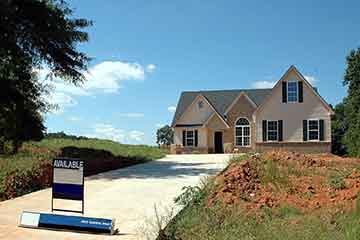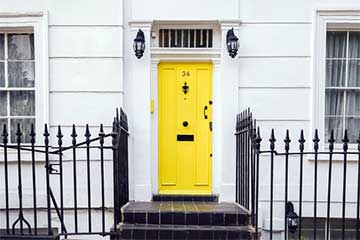What is Buy-to-Let? Buy to Let Mortgage Explained
If you are a new homeowner or you are on your way to become a landlord, most likely you have heard about buying to let. In this guide, we are going to answer the questions such as: What is buy to let? How is a buy-to-let mortgage working? What are my options and challenges with a buy to let mortgage?
The shortest description of “what is buy to let” is: Buy-to-let mortgages are for landlords who want to add a new property to their renting portfolio (existing or not).
There are some similarities and differences between Buy to Lets and standard mortgages, and in this article we’ll be explaining everything you need to know about buying to let.
Buy to let mortgages, BTL for short, are used in cases where landlords wish to purchase a property, with the intention of renting it out to other tenants. Buy to lets therefore tend not to be for first time homeowners, as the idea is that you buy the property, but rent it out to someone else.
Even you are the owner of this new property, you can not live in it. These BTLs can make a good investment when are properly understood. As the properties are intended as investment opportunities, residential mortgages are not applicable and you must attain the BTL mortgage.
Typically, you can expect high street commercial banks, as well as some specialist lenders to offer BTL mortgages. It is often best to consult a mortgage broker to compare the best and most suitable deals for you before deciding on a Buy To Let mortgage package.
Reasons for choosing a Buy-To-Let mortgage include:
- To invest in a property (expanding your portfolio)
- You already own a house, outright or not, and are looking for a form of supplementary income
- You have good credit, savings, and can afford to bear the risk of a new investment
- You meet requirements for taking out a BTL mortgage: earn over £25,000 per annum, and are under the age of 70 (as mortgages take a while to be paid off, they tend to have an upper age limit)
There are a couple features to take note of which differ to normal mortgages, relevant whether you are familiar with standard mortgages or if this is your first property.
Firstly, fees and interest rates for BTLs tend to be higher, and the minimum deposit usually sits at roughly 20-25% of the property’s sale value. (Similar to normal mortgages, better interest rate deals usually require deposits of about 40%, which is usually most feasible for experienced property investors).
While interest rates are higher, payments for BTLs tend to collect only the interest sum from each month, with payments for the value of the property itself is usually repaid in full at the end of the mortgage term. This means your monthly expenditure is less than with standard mortgages, but means you’ll need to keep track of the lump sum due at the end of the mortgage’s term.
Note that these standards may differ if you intend to take out a BTL mortgage for a close/ loved one, as in this case the mortgage tends to be treated more like a residential mortgage.
Need A Free Estimate?
- Fully qualified RICS professional surveyor
- Affordable, fast and thorough surveys
- Clear, precise and easy to understand report
The upper limit of how much you can borrow for your mortgage will depend on your expected rental income from the property in question. To determine this, consider talking to local estate agents, and checking online for prices of nearby and similar properties. This is important, as your rental income needs to be 20-30% higher than your mortgage payments.
While a BTL can be a great investment for property owners of all levels and expertise, make sure to be realistic about the risk versus reward of it. There will be periods where the property is empty, and no tenants means no rent being paid to you.
If this is how you plan to finance your BTL mortgage, make sure to have some savings ready for these less financially fruitful periods, so that you do not end up hurting your credit score or building up debt.
Similarly, there may be unexpected bills or emergencies which you – the landlord – are expected to finance. For both scenarios, be disciplined about saving some/ most of your rental income when you are receiving it for later down the line when you may need that financial leeway.
Finally, as mentioned, BTL capital value payments are typically taken in full at the end of the mortgage term, and only interest is paid monthly. This said, do not rely on selling the property to make up the mortgage repayment cost, as the value of the property could depreciate leaving you to make up the difference.
Once again, be strict about factoring in things which could go wrong, so that you are not left with any unpleasant surprises, and always have a contingency plan when it comes to payments.
It’s not a typical move to invest in a BTL as a first time buy, but maybe you are struggling to get on the property ladder and think some extra cash might help.
Without any sort of property portfolio, you will likely need a larger deposit to be considered, and there will be fewer mortgage options available to you.
As you won’t be living in the property yourself, you will also forgo your first-time buyer relief, however you will only be charged the home mover rate (rate at which non-first time buyers purchasing a property for themselves would pay). If you then buy a house for you to live in, while keeping your first BTL, you will then switch to paying the full BTL rates.
Choosing a BTL as a first property can also affect your chances of obtaining a residential mortgage later on, as your outstanding debt will be factored into your credit profile.
It is however quite likely that if you are looking at a buy to let that you are a current homeowner looking to make an investment in an additional property.
Therefore are taxes associated with these properties, as they are essentially forms of capital investment and gain. As such, be aware of what you may need to start declaring:
- Capital Gains Tax (CGT): Basic bracket taxpayers using a BTL for a second property, will have to pay 18% CGT, while higher rate tax payers will need to pay 28%. Also, in the scenario that you sell your property and make a profit above the annual income threshold of £12, 300 (as of 2021/22) you will also need to pay the appropriate CGT – this should be declared on you Self Assessment tax return, as well as factored into your tax bracket status.
- Income Tax: The income you make through rent is considered eligible to be income taxed, and should therefore be declared in your Self Assessment form too. The level of tax depends on your income tax bracket.
- Mortgage Interest Tax Relief: Landlords cannot now deduct their BTL mortgage interest payments from their declared income level, and now instead receive a tax credit based on 20% of the interest only of your mortgage payments. This means landlords could see themselves paying more tax.
- Offsetting These Taxes: You can reduce your tax amounts by declaring various expenses alongside your capital gains or income. For CGT, Stamp Duty, solicitor costs, and estate agent fees can reduce your overall declared CGT. For income tax, you can reduce your declaration by factoring in costs such as property maintenance and Council Tax.
Most of the high street banks and some specialist lenders offer BTL mortgages.
We highly recommend talking to a mortgage adviser before you take out a buy-to-let mortgage, as they will help you choose the most suitable deal for you.
Of course, you can check online lenders or tools, such as comparison websites. These are excellent places to start for anyone looking for a mortgage that is tailored to their specific circumstances.
There are some popular mortgage comparison websites, such an example is Money SuperMarket.
However, remember that not all comparison websites will offer you the same results, so use more than one before making a decision. It’s also necessary to do some research into the type of product and characteristics you require before making a purchase or changing suppliers.
Don’t simply look at the headline mortgage rates; there are frequently other fees and taxes associated.
Written by Danil P.
19th Nov 2021 (Last updated on 20th Apr 2023)
5 minute read





